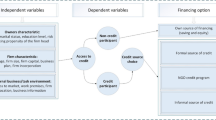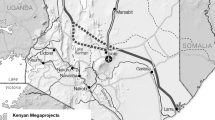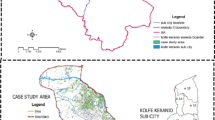Abstract
The study was carried out to identify constraints that women face for improving income-generating activities with particular reference to Productive Safety Net Program (PSNP) project areas in Daro Labu and Lasta Districts of Ethiopia. A qualitative research approach using a descriptive design was employed. Field observation, survey and focus group discussion, and key informant interview were used for collecting data from 98 respondents, and the data were analyzed using thematic analysis and narration. The study revealed that the support made to poor women through public works of Productive Safety Net Program is negligible to create productive asset. With the existing amount of payment for public work, it is less likely to create productive asset and thereby ensure food security in the areas. Similarly, inflation rate was not considered, and constant rate of payment is made for the public works throughout the project period. The constraints of women for improving income-generating activities are multi-faceted which include physical, economic, natural, and sociocultural factors. The identified constraints are not only affecting the beneficiaries but also are affecting the success of the Productive Safety Net Program (PSNP). Finally, the findings pinpointed areas that need due consideration in the process of implementing Productive Safety Net Program in developing countries particularly, in Africa. Thus, the Productive Safety Net Program actors need to be well synchronized with an effective linkage mechanism for improving the income of the poor women group.
Similar content being viewed by others
Notes
Kebele is the lowest administration structure of the government.
References
Ayferam, G. (2015). Assessment of the roles and constraints of women in economic development of Ethiopia: the case of ambo town since 1991. Journal of Political Science and Public Affairs, 3, 148. https://doi.org/10.4172/23320761.1000148.
Aysha, A., Nobaya, A., Mohammad, A. I., Wan Munira, W. J., Dahlia, B. Z., & Mohammad, M. I. (2018). Empowerment scenario of rural women through income generating activities in Bangladesh. Arts and Social Sciences Journal, 9(5), 1–11. https://doi.org/10.4172/2151-6200.1000414.
Bedru H. (2011). Practices and challenges on economic empowerment of rural women in Halaba Special Woreda S.N.N.P.R. Ethiopia. http://www.secheresse.info/spip.phparticle41485.
Biruk, K., & Mesfin, Y. (2017). Assessment of rural women participation on income generating activities in Assosa District, Benishangul-Gumuz region, Western Ethiopia. Journal of Economics and Sustainable Development, 8(11), 1–6. http://www.iiste.org.
Devereux, S. (2000). Food insecurity in Ethiopia. A discussion paper for DFID. IDS, Sussex: Brighton https://www.ids.ac.uk/download.php.
Fletschner, D. (2011). Rural women’s access to credit: Market imperfections and intra household dynamics. World Development, 37(3), 618–631. https://doi.org/10.1016/j.worlddev.2008.08.005.
Fletschner, D., & Carter, M. (2008). Constructing and reconstructing gender: Reference group effects and women’s demand for entrepreneurial capital. Journal of Socio-Economics, 37, 672–693. https://doi.org/10.1016/j.socec.2006.12.054.
Gulsan, A. P., Reazaul Ahsan, S. M., & Chowdhury, M. R. (2004). Women empowerment performance of income generating activities supported by rural women employment creation project (RWECP): a case study in Dumuria Thana, Bangladesh. The Journal of Geo-Environment, 4, 47–62.
ILO. (2012). Project on economic empowerment HIV vulnerability reduction along transport corridors in South Africa: Corridor economic empowerment innovative fund concept and design. Geneva: ILO https://www.ilo.org/africa/technical-cooperation/WCMS_229693/lang%2D%2Den/index.htm.
Kevane, M. (2004). Women and development in Africa: How gender works. Boulder: Lynne Reiner Publishers, 2004. Loans to women in rural Bangladesh. World Development, 29(1), 63–84 http://dept.ru.ac.bd/geography/Article_5.PDF.
Mebrahtom A. (2012). Prospects and challenges of women focused income generating activities” the case study of Ganta afeshum Woreda, Tigray, Ethiopia. Integrated Women Empowerment Program (IWEP) https://edepot.wur.nl/298439
Roy, P. K., Haque, S., Jannat, A., Ali, M., & Khan, M. S. (2017). Contribution of women to household income and decision making in some selected areas of Mymensingh in Bangladesh. Prograsive Agriculture, 28(2), 120–129. https://doi.org/10.3329/pa.v28i2.33473.
Shaikh, S. H., Hossain, M., Sultana, S., & Ghosh, M. K. (2015). Women’s involvement in income generating activities and their opinion about its contribution: a study of Gazipur District, Bangladesh. Science Innovation, 3(6), 72–80. https://doi.org/10.11648/j.si.20150306.13.
Tesfaye, E., & Gemechu, S. (2016). Towards empowering rural women through micro-finance assisted income generating activities: the case of Wesasa Microfinance Institution, Dandi District, Ethiopia. https://doi.org/10.11634/216796061605772.
UNDP (2006). Economic Empowerment of women through small business enterprises. https://www.enterprise-development.org/wp-content/uploads/Womens_Economic_Empowerment.pdf
Wekwete, N. N. (2014). Gender and economic empowerment in Africa: Evidence and policy. Journal of African Economies, 23(1), 87–127 https://ideas.repec.org/a/oup/jafrec/v23y2014isuppl_1pi87-i127..html.
Acknowledgments
The authors would like to thank USAID and World Vision Ethiopia for the finacial support and facilitation of the fund respectively. We also wish to express our heartfelt thanks to the IFPRI and Ambo University for their technical support and guidance of the research work. The women and expert respondents of Daro Labu (Oromia) and Lasta (Amhara) districts are also highly acknowledged for providing the necessary information.
Funding
This research work was financially supported by the USAID through World Vision Ethiopia.
Author information
Authors and Affiliations
Corresponding author
Ethics declarations
Conflict of Interest
The authors declare that they have no conflict of interest.
Ethical Statements
The authors hereby confirm you that the data were collected from women group with their consent. They have participated in the research voluntarily. The research report is not also indicated the name of the respondents. We can also confirm you that the research is dealing with constraints of women while participating in public works; and it did not address any sensitive areas.
Additional information
Publisher’s Note
Springer Nature remains neutral with regard to jurisdictional claims in published maps and institutional affiliations.
Rights and permissions
About this article
Cite this article
Abebe, W., Kasa, A. Constraints to Women Participating in Public Works for Improving Income-Generating Activities in Selected Districts Vis-a-vis Productive Safety Net Program of Ethiopia. Glob Soc Welf 8, 181–185 (2021). https://doi.org/10.1007/s40609-020-00184-2
Published:
Issue Date:
DOI: https://doi.org/10.1007/s40609-020-00184-2




